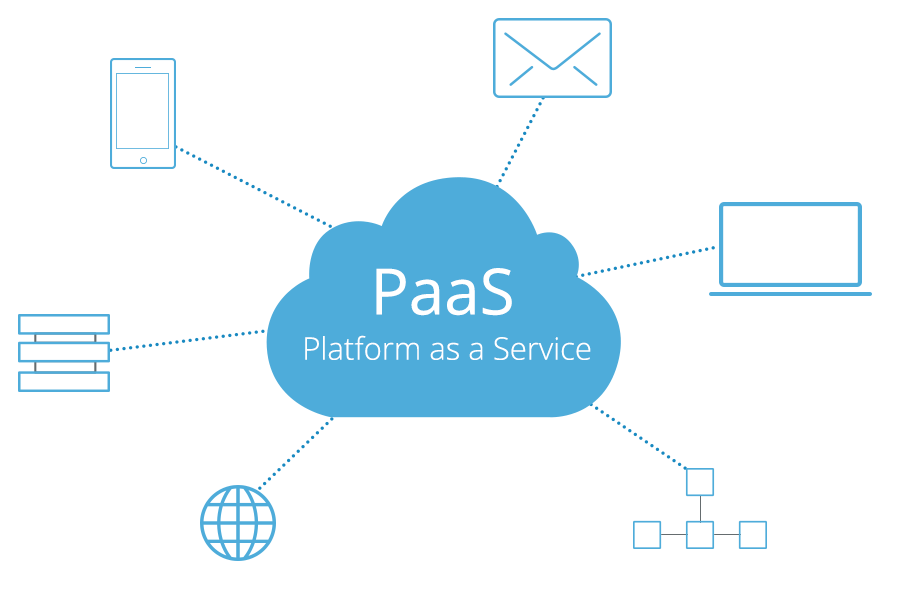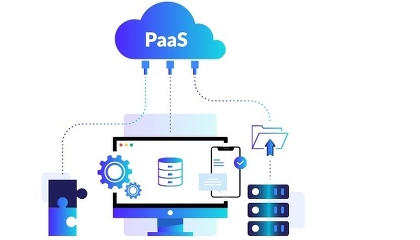Hello!
Platform as a Service (or PaaS) is a cloud computing model that allows users to rent software tools and hardware over the internet. This makes it easy to quickly develop software and apps.
 PaaS is typically used by developers. It allows them to create, compile, and run programs without having to worry about the infrastructure.
PaaS is typically used by developers. It allows them to create, compile, and run programs without having to worry about the infrastructure.
PaaS allows users to manage and control the cloud infrastructure. This includes servers and storage. However, they can control the deployment of applications and the configuration settings. Amazon Web Services (r) Elastic Beanstalk, and Google App Engine are two popular PaaS offerings from Google Cloud.
Clients can build, secure, manage, and operate online applications with a Cloud Computing Service Platform. It allows teams to create and deploy apps without having to manage the IT infrastructure.
The platform provides developers and users access to the Internet while supporting the entire software development life cycle. PaaS benefits include simplicity, cost savings, and flexibility.
How to Secure Platform as A Service (PaaS Environments)
PaaS is not always as secure as an on-premises data center.
 PaaS environments are protected by security features. PaaS clients have security in place to protect their platform accounts, data, and applications. In an ideal world, identity perimeter security would replace premise security.
PaaS environments are protected by security features. PaaS clients have security in place to protect their platform accounts, data, and applications. In an ideal world, identity perimeter security would replace premise security.
The client of PaaS should make identification the primary security border. To protect code, data, configurations, and operations, authentication, monitoring, operations, monitoring, logging, and logging are essential.
Apps to defend against frequent and unknown threats
 The best way to protect yourself is to use an automated security system that detects and stops any assault automatically. PaaS users can also use the platform’s security tools or third-party solutions.
The best way to protect yourself is to use an automated security system that detects and stops any assault automatically. PaaS users can also use the platform’s security tools or third-party solutions.
Unauthorized access, attacks, and breaches should all be immediately detected and stopped
You must be able to detect malicious bots, hostile users, log-ins that are unusual, take-overs, and other anomalies. Security is an important aspect of technology.
Protect app and user resources
Every contact can be considered an attack surface. It is important to limit or limit the access of untrustworthy individuals to resources and vulnerabilities. This will help prevent attacks. Security systems must be regularly patched and upgraded to minimize vulnerabilities.
The platform is not protected by the service provider. However, it is the responsibility of the client to ensure security. Security methods, such as add-ons and third-party solutions, can significantly improve account, app, and data protection. The system is only accessible by authorized workers and users.
 Another option is to limit administrative access and create an audit system for detecting potentially dangerous actions by external users and internal teams.
Another option is to limit administrative access and create an audit system for detecting potentially dangerous actions by external users and internal teams.
Administrators should limit the permissions granted to users as much as possible. Users should be granted as few permissions as possible to ensure that programs and other actions are performed correctly. As a result, the attack surface is shrinking and more privileged resources are being exposed.
Check for security flaws with the App
Security vulnerabilities and risks in applications and libraries are assessed. The results can be used to improve component protection. In an ideal scenario, daily scanning could be automated based on app security risks and sensitivity.
You should include a solution that can integrate into other tools such as communication software or be used to notify the appropriate individuals when a security threat or attack is detected.
Analyze security issues related to addiction and make recommendations
 Applications rely on open source requirements in both direct and indirect ways. These weaknesses can make an application insecure if they aren’t fixed.
Applications rely on open source requirements in both direct and indirect ways. These weaknesses can make an application insecure if they aren’t fixed.
Validating third-party networks and testing APIs requires an analysis of the program’s internal components and external parts. All of these methods are effective in mitigating the problem.
Threat modeling and pentesting
Penetration testing is used to detect security issues and fix them before they are exploited by attackers. Penetration testing can seem aggressive and like DDoS attacks. Security personnel needs to work together in order to prevent false alarms.
 Threat modeling is the simulation of attacks from trusted borders. This allows attackers to exploit design flaws. IT teams can then improve security and find solutions to any vulnerabilities or risks.
Threat modeling is the simulation of attacks from trusted borders. This allows attackers to exploit design flaws. IT teams can then improve security and find solutions to any vulnerabilities or risks.
Follow user access and file access
Security teams can see the interactions of users with the platform by managing privileged accounts. It also allows security teams the ability to determine if certain user actions are a threat to safety or compliance.
Check and record user permissions, and then file actions. This monitors unauthorized access, changes, downloads, or uploads. All users who view a file should be recorded by file activity monitoring systems.
A good solution will detect multiple log-in attempts, suspicious activity, or repeated failed log-in attempts. Logging in at odd hours, downloading suspicious material, and so on. These security systems notify security personnel to fix security issues and stop suspicious behavior.
Restricted data access
 Data encryption during storage and transport is the best option. Securing Internet communication links can also prevent human attacks.
Data encryption during storage and transport is the best option. Securing Internet communication links can also prevent human attacks.
Set HTTPS to use TLS to encrypt and secure the channel and data.
Always verify the data
This ensures that the input data are safe and in the correct format.
All data, regardless of whether it comes from an external security team or internal users, must be considered high-risk. Client-side validations should be done properly to prevent files that are infected or compromised from being uploaded.
Code of vulnerability
During development, analyze the vulnerability code. Developers should not release the program into production until the code is verified.
MFA Enforcement
Multi-factor authentication allows only authorized users to access data, apps, and systems. You can use a password, OTP, or SMS to access your mobile app.
Enforce password security
Many people choose weak passwords that they can remember easily and don’t update. Administrators can reduce this risk by creating strong password policies.
It is important to use strong passwords that do not expire. It is preferable to use encrypted authentication tokens, credentials, and passwords instead of plain text credentials.
Authorization and authentication
 Authentication and authorization protocols such as OAuth2 or Kerberos, are acceptable. Although unique authentication codes are unlikely not to expose systems to hackers, they can still be abused.
Authentication and authorization protocols such as OAuth2 or Kerberos, are acceptable. Although unique authentication codes are unlikely not to expose systems to hackers, they can still be abused.
Management essentials
Avoid using cryptographic keys that are predictable. Instead, use secure distribution methods to rotate keys often, renew keys on time, and avoid hardcoding keys in apps.
Automated key rotation improves security and compliance while reducing data exposure.
Access app and data control
You should create an auditable security policy that includes strict access restrictions. It is better to limit access to users and workers who are authorized.
Log collection and analysis
 All data can be useful, including system logs, APIs, and applications. Automated log collection and analysis also provide valuable information. Logging services can be used as add-ons or built-in features. They are great for ensuring compliance with security laws.
All data can be useful, including system logs, APIs, and applications. Automated log collection and analysis also provide valuable information. Logging services can be used as add-ons or built-in features. They are great for ensuring compliance with security laws.
Log analyzers can be used to communicate with your alert system, provide support for your technological stacks and create a dashboard.
Keep track of everything
This includes unsuccessful and successful log-in attempts, password modifications, as well as other account-related events. An automated approach can also be used to stop the suspicious or insecure counter activity.
Conclusion
Security of an account, data, or application is now the responsibility of the customer or subscriber. This requires a different security approach to traditional on-site data centers.
Safety must be considered when developing applications that provide adequate protection both internally and externally.
Log analysis shows security flaws and areas for improvement. In an ideal world, security teams would identify vulnerabilities and risks before attackers knew.
Thank you!
Join us on social networks!
See you!






